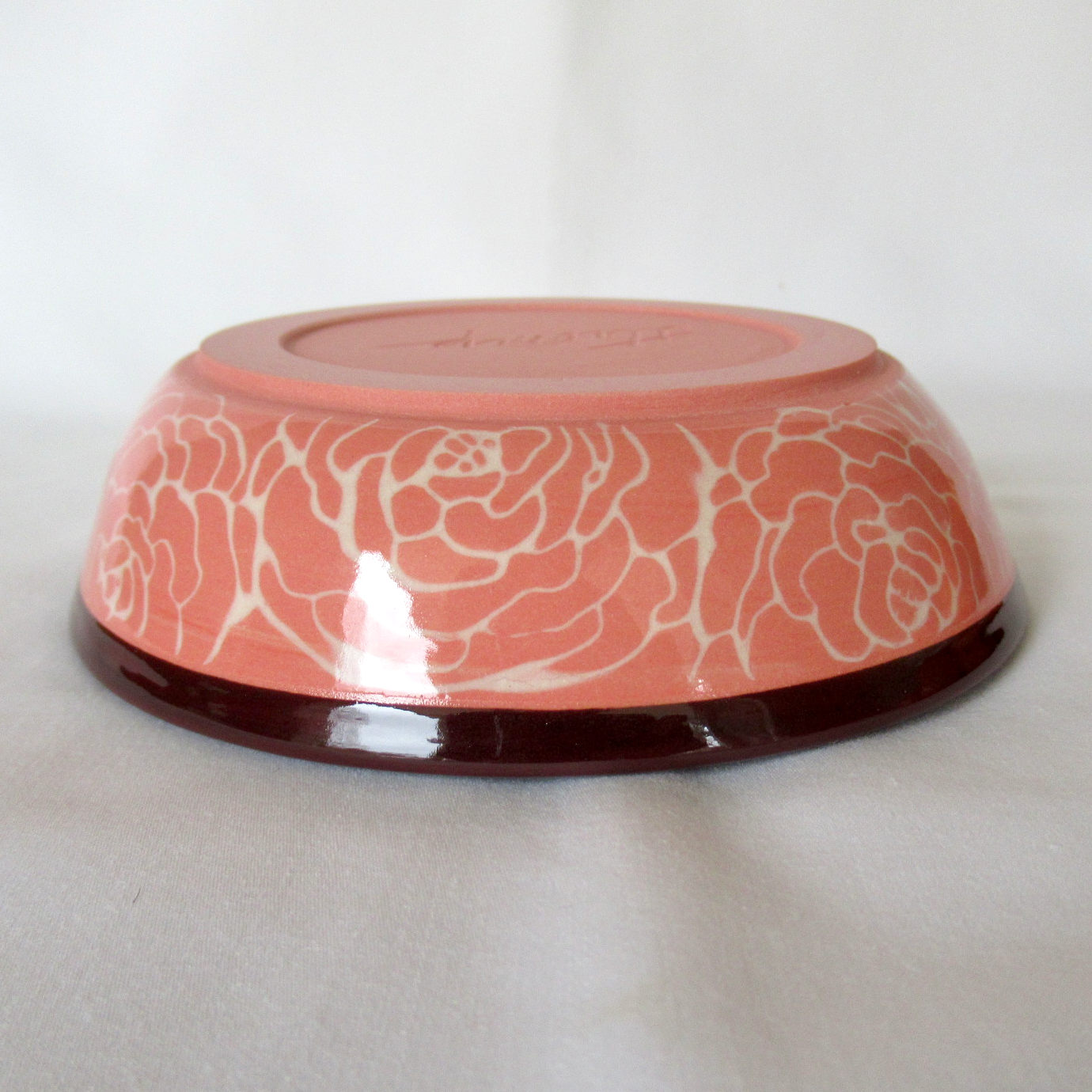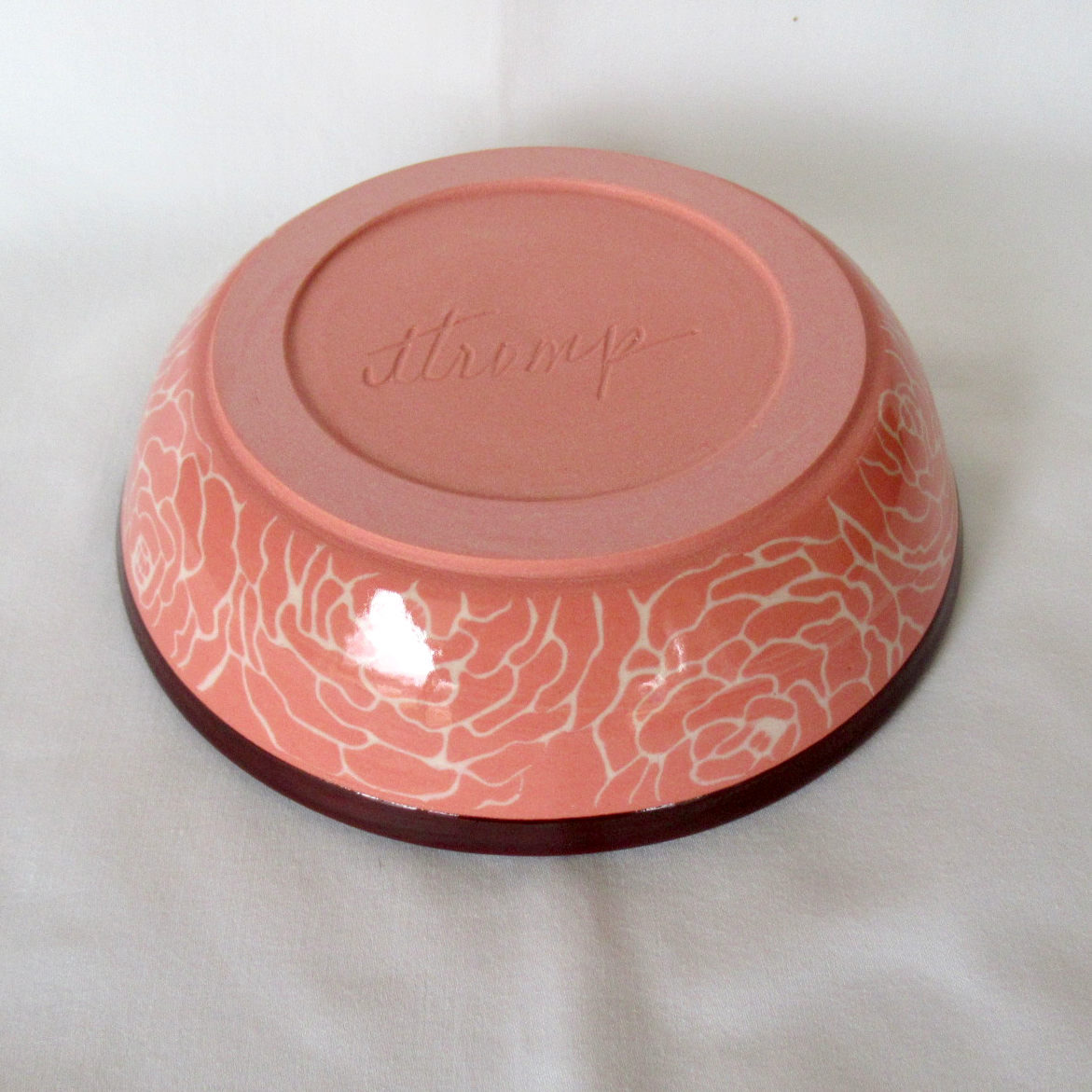Tromppottery
Wheel-thrown Ceramic Shallow Bowl with Colored Porcelain Mishima Roses Inlay Technique. Whisker Friendly.
Wheel-thrown Ceramic Shallow Bowl with Colored Porcelain Mishima Roses Inlay Technique. Whisker Friendly.
Couldn't load pickup availability
Handmade Wheel-thrown Mishima Colored Clay Technique Shallow Bowl Measures:
4-5/8" wide x 1-5/8" high. (11.74cm x 4.12cm)
This would be a very special cat lover's gift!
There probably are not too many cats that eat out of a mishima inlay technique cat bowl.
This shallow bowl would make a great Whisker Friendly cat food bowl.
Low sides keep cat's whiskers out of their food, and keep their sensitive whiskers from touching a deep bowl's sides.
Can also be used to accommodate jewelry, coins, or perhaps to serve a couple bonbons.
OUTSIDE:
Eight white mishima roses around the circumference of the bowl, alternating the top half of the rose with the bottom half of the rose.
The background color is coral red.
The footring has been ground smooth with a diamond sanding disk on the potter's wheel.
Sides are glazed with glossy, lead-free, dinnerware safe clear glaze.
INSIDE:
A soft, glossy peach glaze on the interior of this cat bowl, overlapping the dark rim glaze.
This layering effect creates drippy sides that produce a third color and tiny flecks where the colors overlap.
Swirls on the bottom are clearly visible, and the coral clay shows through the slightly raised areas.
Tiny dark blue speckles near the rim.
RIM:
Very dark, glossy cordovan.
Wheel thrown and hand glazed by me.
Standard 365 Porcelain.
Glazed with lead free, dinnerware safe clear glaze.
Dishwasher, microwave and oven safe.
Kiln fired to cone 6 (2232 degrees Fahrenheit.)
Engraved with my signature on the bottom.
How it’s Made
This piece was made from hand-colored porcelain pottery clay and wheel-thrown on the potter's wheel.
After the piece was trimmed (footring), and allowed to dry to leather hard stage (not wet clay, and not bone dry) eight roses were carved out of the coral clay, alternating the top half and the bottom half of the flowers, using a ball tool. This left a groove in the clay. This groove was filled in with a white porcelain slip (wet clay).
After sufficient drying time, the excess clay was scraped down to the surface, leaving the surface smooth.
Share








